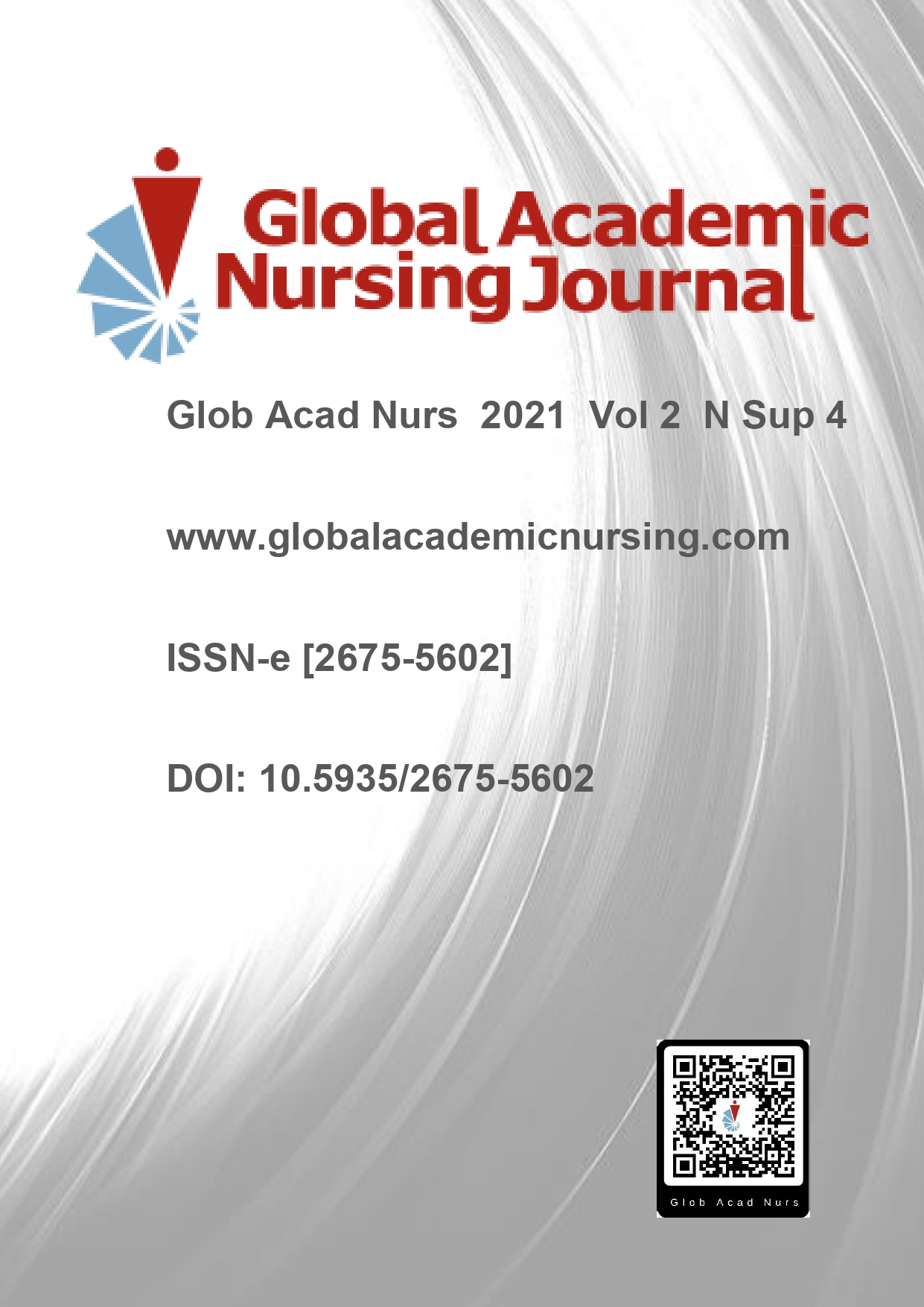Abstract
This is bibliographical research with a qualitative approach and descriptive character, which has as object of study the nurse working in the ICU, which aimed to identify the possible strategies used by nurses in the prevention and control of infections related to the central vascular catheter in the ICU. As a methodology, articles published in a virtual database were used. For this purpose, the Virtual Health Library database platform was used, in the LILACS, BDENF, MEDLINE and SciELO databases, with a time frame from 2008 to 2018. The morbidity and mortality rate related to disability in the management of CVC is worrisome due to the non-adoption of infection prevention and control strategies. Regarding patient safety, it is essential that there is a continuous assessment of the implementation, to identify whether the strategies were sufficient for professionals to assimilate the content of the protocols for patient safety. It is concluded that nurses need to master theoretical-scientific knowledge and technical skills in handling the CVC to provide patient safety, taking care to put into practice the strategies shown as possible means of preventing and controlling infections.
References
Ministério da Saúde (BR). Prevenção e controle de infecção hospitalar [Internet]. Brasília (DF): MS; 2005 [acesso em 12 abr 2019] Disponível em: http://www.anvisa.gov.br/servicosaude/manuais/manual_pediatria.pdf
Agência de Vigilância Sanitária (Anvisa). Documento de referência para o Programa Naciona de Segurança do Paciente [Internet]. Brasília (DF): Anvisa; 2014 [acesso em 12 abr 2019]. Disponível em: https://bvsms.saude.gov.br/bvs/publicacoes/documento_referencia_programa_nacional_seguranca.pdf
Netto SM, Echer IC, Kuplich NM, Kessler F. Infecção de cateter vascular central em pacientes adultos de um centro de terapia intensiva. Repositório Digital UFRGS [Internet]. 2009 [acesso em 02 mai 2019];30(3). Disponível em: https://www.lume.ufrgs.br/handle/10183/23638
Moura MEB, Campelo SMA, Brito FCP, Batista OMA, Araújo TME, Oliveira ADS. Infecção hospitalar: estudo de prevalência em um hospital público de ensino. Rev Bras En-ferm. 2007;60(4). DOI: 10.1590/S0034-71672007000400011
Macrconi EK, Freitas KAD, Paula NVK. Infecções relacionadas ao cateter venoso central em terapia intensiva. Rev Saúde.Com. 2021;17(4). DOI: 10.22481/rsc.v17i2.7331
Pereira LMV, Almeida LF, Franco AS, Marins ALCR, Ribeiro GSR, Macedo MCS. Retirada não planejada de dispositivos invasivos e suas implicações para a segurança do paciente crítico. Rev. pesqui. cuid. fundam.2018;10(2). DOI: 10.9789/2175-5361.2018.v10i2.490-495
Brachine JDP, Peterlini MAS, Pedreira MLG. Método Bundle na redução
de infecção de corrente sanguínea relacionada a cateteres centrais: revisão
integrativa. Rev Gaúcha Enferm. 2012;33(4). DOI: 10.1590/S1983-14472012000400025
Guimarães GL, Gouveia VR, Mendonza IYQ, Corrêa AR, Matos SS, Guimarães JO. Intervenções de enfermagem no paciente em hemodiálise por cateter venoso central. Rev. enferm. UFPE on line. 2017;11(3. DOI: 10.5205/1981-8963-v11i3p1127-1135
Alves JL, Mendes R, Clesnan J, Antunes AV. Prevalência de Flebite em uma Unidade de Internação Clínica de um Hospital Universitário Brasileiro de Alta Complexidade. Rev. bras. ciênc. saúde. 2018;22(3). DOI: 10.22478/ufpb.2317-6032.2018v22n3.27078
Barbosa CV, Canhesto NR, Couto BRGM, Guimarães GL, Mendoza IYQ, Gouveia VR. Saberes da equipe de enfermagem sobre cuidados com cateter venoso central. Rev. enferm. UFPE on line. 2017;11(11). DOI: 10.5205/reuol.23542-49901-1-ED.1111201710
Santos RP, Mariano LR, Takahashi LS, Erdmann MF. Prevalência de infecção hospitalar em Unidade de Terapia Intensiva – Um estudo retrospectivo. Rev Enferm UFSM. 2014;4(2). DOI: 10.5902/2179769211233
Mendonça KM, Neves HCC, Barbosa DFS, Souza ACS, Prado MA. Atuação da enfermagem na prevenção e controle de infecção de corrente sanguínea relacionada a cateter. Rev. Enferm UERJ [Internet]. 2011 [acesso em 12 abr 2019];19(2). Disponível em: https://repositorio.bc.ufg.br/bitstream/ri/16244/5/Artigo%20-%20Katiane%20Martins%20Mendonça%20-%202011.pdf
Andrade MR, Silva HG, Oliveira BGRB, Cruz ICF. Risco de infecção no cateter venoso central – revisão de literatura. Brazilian Journal of Nursing [Internet]. 2010 [acesso em 16 abr 2019];9(2). Disponível em: http://www.objnursing.uff.br/index.php/nursing/article/view/j.1676-4285.2010.3109/700
Gil AC. Como elaborar projetos de pesquisa. 5ª Edição. São Paulo: Atlas; 2008
Minayo MCS. O Desafio do conhecimento: pesquisa qualitativa em saúde. 11ª Edição. São Paulo. Hucitec; 2008
Galvão TF, Pansani TSA, Harrad D. Principais itens para relatar Revisões sistemáticas e Meta-análises: A recomendação PRISMA. Epidem Serv Saúde. 2015;24(2):335-42 DOI: 10.5123/S1679-49742015000200017
Tardivo TB, Neto JF, Junior JF. Infecções sanguíneas relacionadas aos cateteres venosos. Rev Bras Clim Med [Internet]. 2008 [acesso em 16 abr 2019];6: 224-227. Disponível em: http://files.bvs.br/upload/S/1679-1010/2008/v6n6/a224-227.pdf
Beordo JR. Segurança do paciente por meio da aplicação adequada do checklist de cirurgia segura. Glob. Acad. Nurs. 2021;2(1):e88. DOI: 10.5935/2675-5602.20200088

This work is licensed under a Creative Commons Attribution-NonCommercial-NoDerivatives 4.0 International License.
Copyright (c) 2021 Global Academic Nursing Journal

